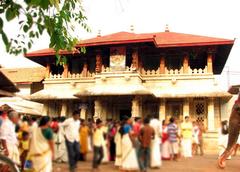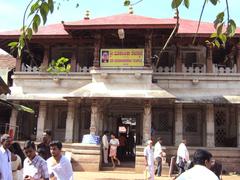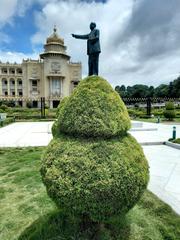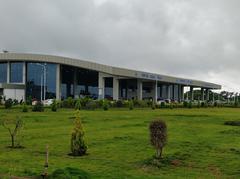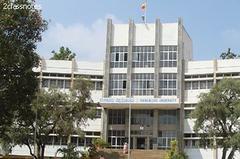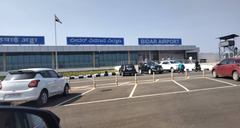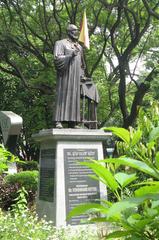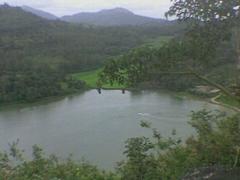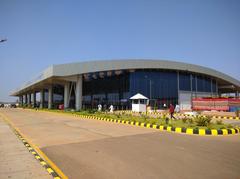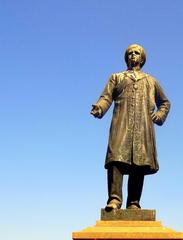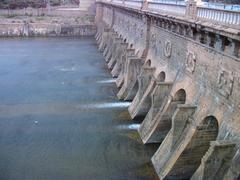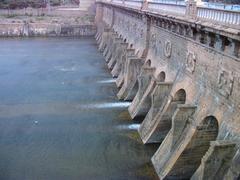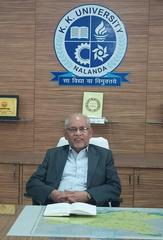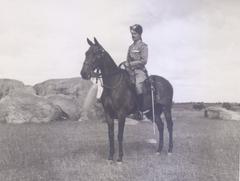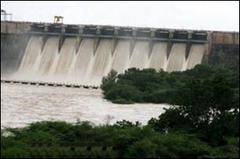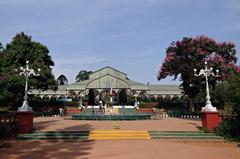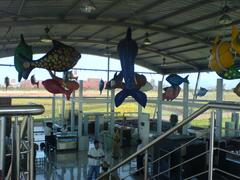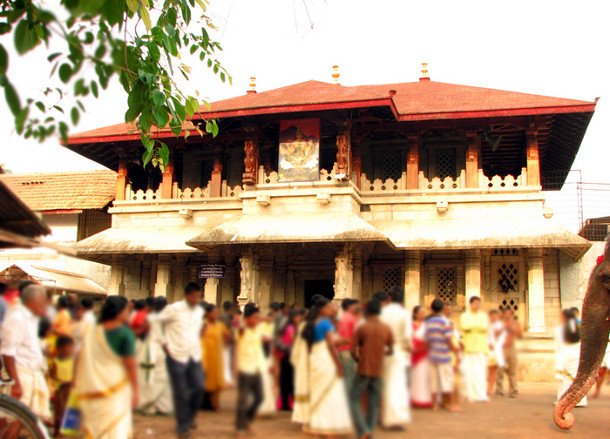
Kollur Mookambika Temple: Visiting Hours, Tickets, and Travel Guide
Date: 15/06/2025
Introduction
Kollur Mookambika Temple, situated in the scenic Udupi district of Karnataka, is one of South India’s most revered Shakti Peethas. Dedicated to Goddess Mookambika, an incarnation of Adi Parashakti, the temple is renowned for its profound spiritual significance, unique mythology, and remarkable architectural beauty. With a history spanning over 1,200 years, its legacy is closely linked to the philosopher Adi Shankaracharya, who is believed to have consecrated the main deity and installed the sacred Sri Chakra. This comprehensive guide details the temple’s origins, architecture, rituals, visiting hours, ticketing, accessibility, festivals, and nearby attractions, providing all the information needed for a meaningful visit (AstroVed; Explore Offbeat).
Historical and Mythological Background
Ancient Origins and Historical Development
The Kollur Mookambika Temple traces its origins to the 8th century and is believed to have been consecrated by Adi Shankaracharya. The temple received extensive patronage from various dynasties, notably the Keladi rulers, who contributed to its expansion and enrichment. The temple’s architecture combines Dravidian, Vijayanagara, and Hoysala elements, evident in its gopuram, gold-plated vimana, and intricately carved pillars (Srimookambika.com; educba.com).
Mythological Roots
According to legend, Goddess Parvati manifested as Mookambika to vanquish the demon Mookasura, symbolizing the victory of divine power over evil. The temple is also associated with Sage Parashurama, believed to have created the region as one of Karnataka’s Mukti Sthalas (abodes of salvation). The unique swayambhu (self-manifested) linga, divided by a golden line (Swarnarekha), represents the unity of the Tridevis (Saraswati, Lakshmi, Parvati) and the Trimurtis (Brahma, Vishnu, Shiva), symbolizing the fusion of masculine and feminine energies (Wikipedia; Viharadarshani).
Architectural Heritage
The temple’s architecture blends Dravidian, Vijayanagara, and Hoysala styles. Its imposing gopuram, gold-plated vimana, and spacious mandapam reflect centuries of artistic patronage. The sanctum (garbhagriha) houses the main idol of Goddess Mookambika, crafted from panchaloha, with four arms holding symbolic items. Subsidiary shrines dedicated to Ganapathi, Subramanya, and others, as well as the sacred Mookambika Theertha tank, add to the temple’s spiritual ambiance (educba.com; TTD Sevas).
Rituals, Festivals, and Devotional Practices
Daily Rituals and Annadanam
Daily poojas begin at dawn with the Nirmalya Pooja, followed by Suprabhatha Seva, aartis, and abhishekas. The temple is renowned for its Annadanam scheme, offering free lunches to all devotees between 12:00 PM and 1:30 PM, reflecting the temple’s commitment to inclusivity.
Major Festivals
- Annual Car Festival (Maha Rathotsava): Held during Vasantha Navaratri (March–April), featuring processions and chariot parades.
- Navaratri and Vijayadashami: Nine-day festival in September–October, culminating in Aksharabhyasa (initiation into learning), attracting thousands of children and families.
- Maha Shivarathri, Dhanurmasa, Ugadi, Ashtabhandha Brahmakalashotsava: Observed with special rituals and community celebrations.
- Other Rituals: Regular Chandika Homa, street processions (Beedhi Utsava), and Annadanam during festivals enrich the devotional experience (Explore Offbeat).
Visiting Hours, Tickets, Dress Code, and Etiquette
Visiting Hours
- Regular Timings: 5:00 AM to 1:30 PM and 3:00 PM to 9:00 PM daily.
- Special Occasions: Extended hours during major festivals.
- Best Time to Visit: October to March for pleasant weather and major celebrations (TheTopTours; jyothisresidency.in).
Tickets and Entry
- Entry: Free for all devotees.
- Special Poojas: Tickets for abhisheka, archana, and other rituals can be booked at the temple office or via authorized portals (TTD Sevas).
Dress Code and Visitor Etiquette
- Men: Dhoti or traditional attire (shirts allowed; vests/shorts discouraged).
- Women: Saree, salwar kameez, or other modest Indian clothing.
- Footwear: To be left outside the temple; shoe racks provided.
- Photography: Prohibited inside the sanctum; permitted only in designated areas.
- Behavior: Maintain silence, respect rituals, and follow staff instructions.
Facilities and Accessibility
- Accommodation: Wide range of lodges, guesthouses, and hotels near the temple. Early booking is recommended during festivals (TravelerBibles; TheTopTours).
- Food: Free prasadam meals served daily; several vegetarian restaurants nearby.
- Cloakrooms & Restrooms: Facilities for storage and restrooms are available.
- Accessibility: Ramps and assistance for differently-abled visitors; temple staff and volunteers are available to help.
Getting There: Transportation and Connectivity
- By Air: Mangalore International Airport (approx. 140 km).
- By Rail: Kundapura (40 km) and Byndoor (28 km) are the closest railway stations.
- By Road: Well-connected by buses and taxis from Udupi, Mangalore, Shimoga, and other major towns.
- Parking: Ample parking facilities are available near the temple complex (TravelerBibles).
Top Nearby Attractions
- Kodachadri Hills: UNESCO heritage trekking site and vantage point.
- Souparnika River: Sacred river ideal for ritual dips and reflection.
- Mookambika Wildlife Sanctuary: Home to diverse flora and fauna.
- Maranakatte Temple: Nearby temple dedicated to Lord Durga.
- Arishina Gundi Falls: Hidden waterfall for nature lovers.
- Maravanthe Beach: Picturesque location where the river meets the sea.
- Nagara Fort, Kundapura, Byndoor: Historical and cultural sites in the vicinity (TripXL).
Practical Tips for a Memorable Visit
- Plan Ahead: Book accommodations and special poojas in advance, especially during festivals.
- Travel Light: Carry essentials like water, rain gear (in monsoon), and medications.
- Follow Customs: Participate respectfully in rituals and community meals.
- Explore Surroundings: Allocate extra time for trekking, wildlife sanctuary visits, and local sightseeing.
Frequently Asked Questions (FAQs)
Q: What are the Kollur Mookambika Temple visiting hours?
A: 5:00 AM to 1:30 PM and 3:00 PM to 9:00 PM daily; may extend during festivals.
Q: Are tickets required for darshan?
A: Entry is free; special poojas/rituals require advance booking.
Q: What is the dress code?
A: Modest Indian attire—dhoti for men, saree/salwar for women; no footwear inside.
Q: Is the temple accessible for differently-abled visitors?
A: Yes, with ramps and assistance available.
Q: How can special poojas be booked?
A: At the temple office or via authorized online portals.
Summary and Final Tips
Kollur Mookambika Temple stands as a harmonious blend of spiritual sanctity, architectural brilliance, and vibrant community life. With its unique self-manifested idol, elaborate rituals, and inclusive services, the temple offers a memorable pilgrimage experience. Whether you are drawn by devotion, history, or the lush landscapes of the Western Ghats, this temple remains an essential stop on Karnataka’s spiritual and cultural map.
For the latest updates, ticketing, and festival information, consult official portals and download the Audiala app for curated travel tips and real-time resources.
Sources and Further Reading
- Kollur Mookambika Temple: History, Mythology, Visiting Hours & Travel Guide, AstroVed
- Discover the Sacred Kollur Shri Mookambika Devi Temple: History, Mythology and Travel Guide, Explore Offbeat
- Kollur Mookambika Temple History, Srimookambika.com
- Kollur Mookambika Temple, Wikipedia
- Kollur Mookambika Temple: Visiting Hours, Tickets & Festivals Guide, TheTopTours
- Kollur Mookambika Temple: Visiting Hours, Tickets, and Guide to This Historic Karnataka Shrine, Jyothis Residency Blog
- Mookambika Temple, educba.com
- Kollur Mookambika Temple Darshan Booking 2024 Complete Guide, TTD Sevas
- Kollur Mookambika Temple Visiting Hours, Tickets, Special Events, and Nearby Attractions Guide, TravelerBibles & TripXL, https://tripxl.com/blog/places-to-visit-near-kollur-mookambika-temple/
- Symbolism in Unique Idol of Kollur, Hindu Blog
